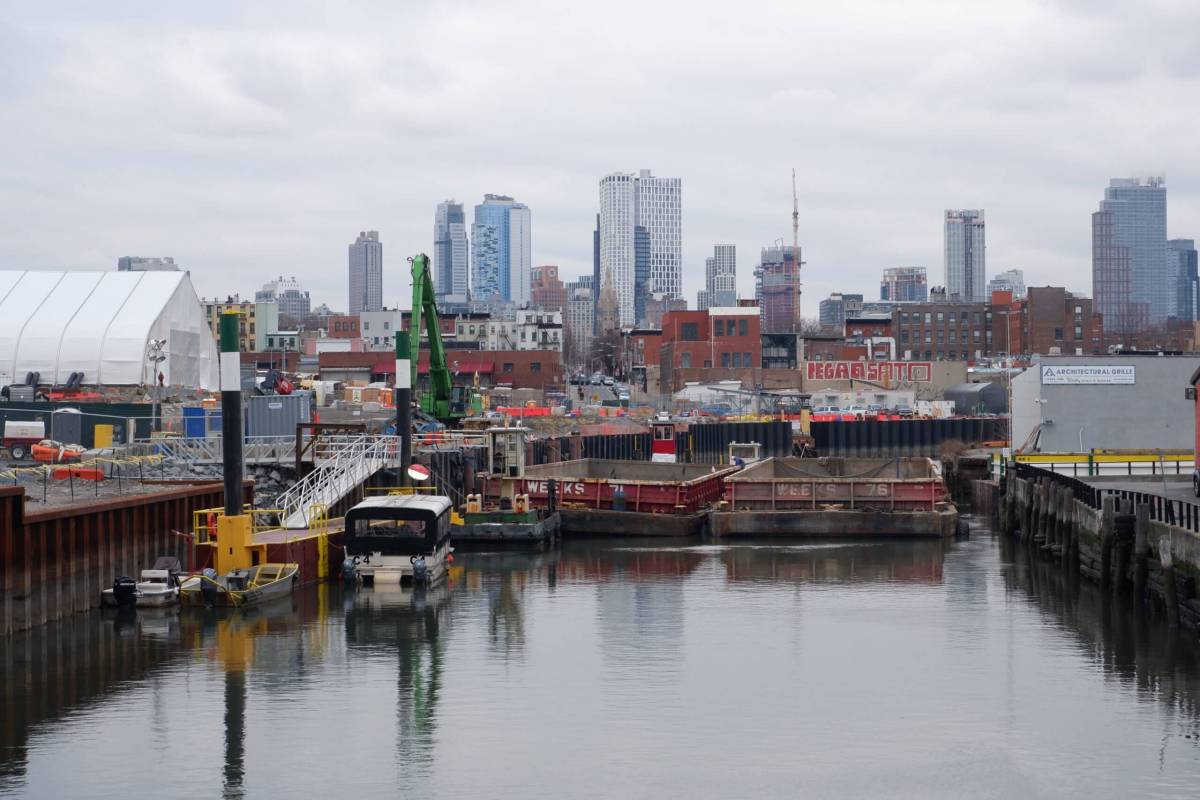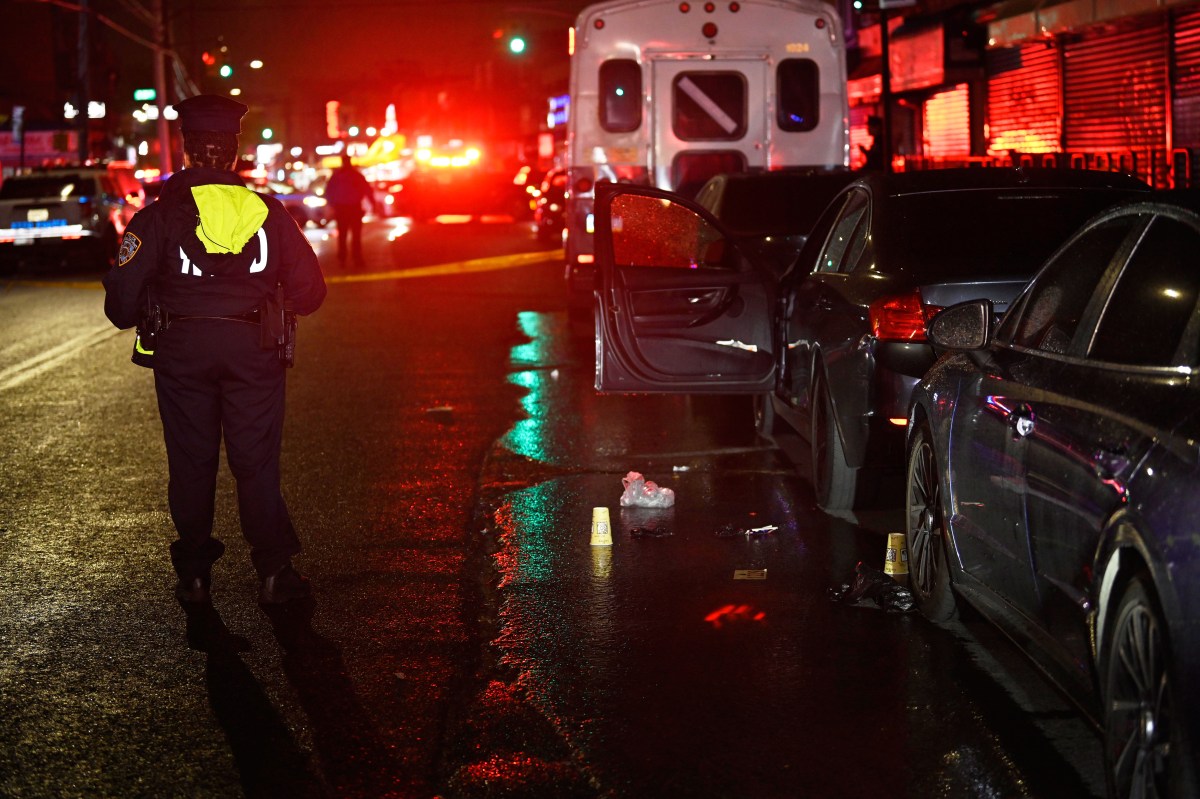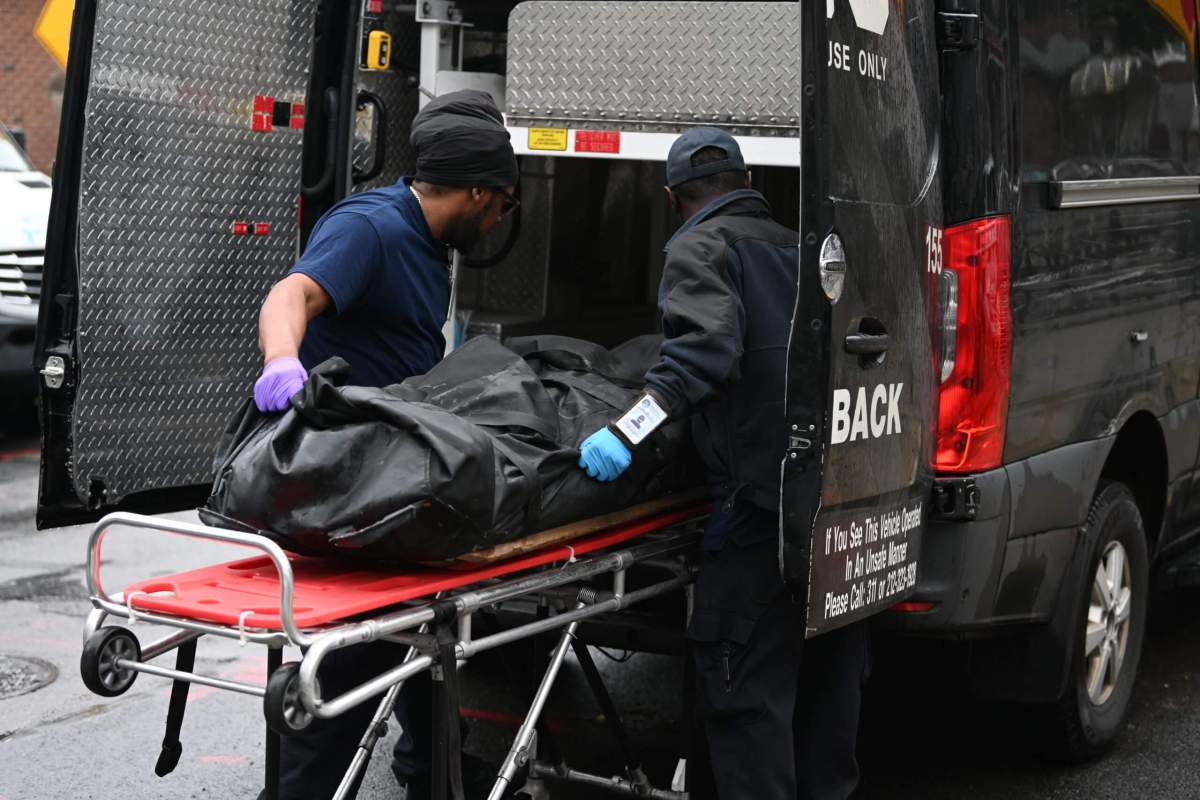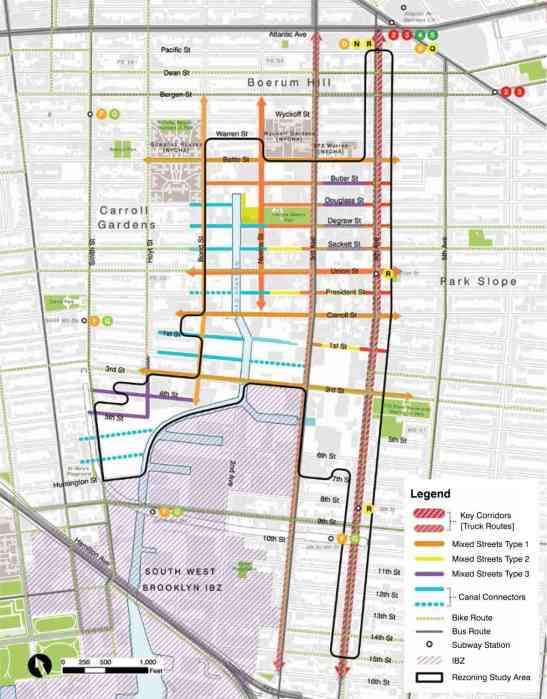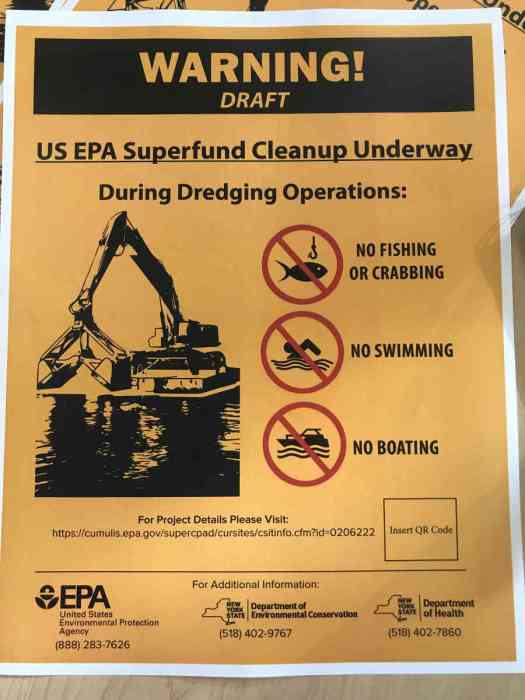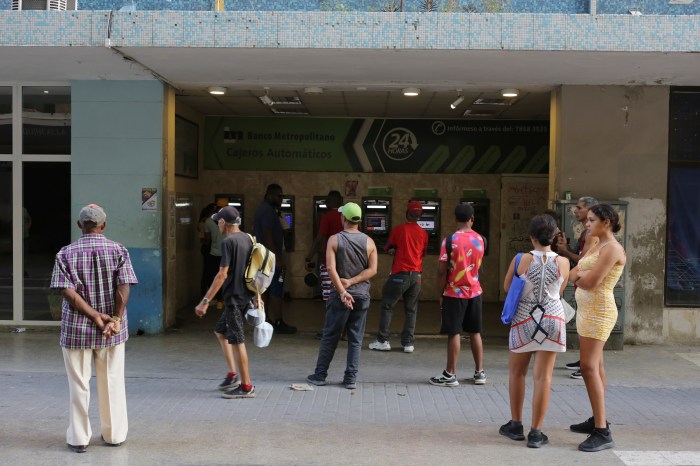The city has done almost no work on a massive sewage and stormwater retention tank necessary for the Gowanus Canal’s Superfund cleanup, despite the federal government ordering them to begin the process seven years ago — which could put the Big Apple on the hook for $60,000 per day in fines for every day they stalled.
“[The Environmental Protection Agency] issued an order in 2014 to begin designing the second tank, and it’s 2021, and they’ve essentially done almost no design work, and still don’t even have a new design contract in place,” said EPA lawyer Brian Carr at a meeting with the project’s watchdog organization, the Gowanus Canal Community Advisory Group, on April 27.
The tank in question is the smaller of two — coming in at four million gallons — that are needed to complete the Superfund cleanup in addition to the ongoing dredging of the canal bed.
If the daily levy is multiplied by the five-to-six year timeframe Carr said Gotham officials have not been following Uncle Sam’s orders, the city could be looking at a bill somewhere between $109,575,000 and $131,490,000 — roughly one-tenth of the $1.1 billion budget for the two tanks combined.
EPA directed the city’s Department of Environmental Protection to build the smaller tank at the Sanitation Department salt storage lot, known as the Salt Lot, at Second Avenue and Sixth Street. Up the canal, DEP must also install the larger, eight million gallon cistern along with a filtration facility known as the head house at Butler and Nevins streets.
The catch basins are a crucial part of the canal’s federally-supervised scrub, which consist of two parts: dredging the canal bed before stabilizing the soil and capping it, and then installing the two stormwater and sewage holding tanks to reduce future pollution.
EPA at the end of March issued a fresh legally-binding order with a new schedule for the mid-canal tank to be operational by 2028, and the upper barrel and facility to be online by 2029. That document also requires the city to have a design for the mid-canal tank done by May 31, and to start construction in 2023.
A spokesman for DEP said the EPA’s most recent timeline was “physically infeasible,” and slammed the feds for threatening sanctions as the Five Boroughs recover from the pandemic.
“DEP is committed to the cleanup of the canal while also protecting New Yorker’s wallets, which is why we have repeatedly told EPA that their proposed schedule is physically infeasible,” said Edward Timbers in an emailed statement. “During a time of much-needed and appreciated federal help, it seems counter-intuitive to be threatening excessive fines while the city recovers from a pandemic.”
While the city has released designs for the larger tank and plans to demolish the existing building there in the fall, DEP officials made little progress on the smaller catch basin and even secretly moved funds from that project to solicit alternative designs for the upper facility last year, as Brooklyn Paper revealed in November.
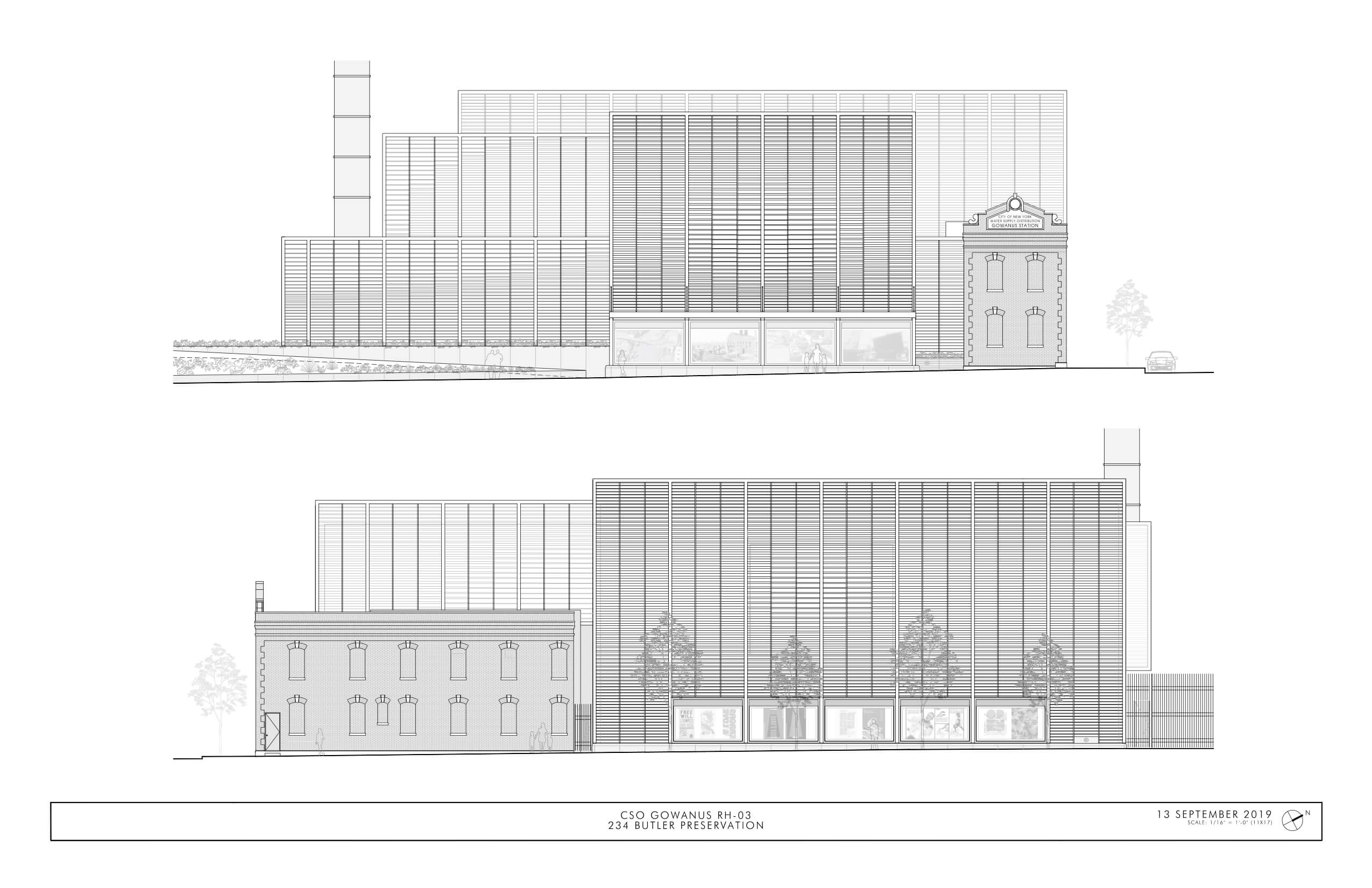
“That noncompliance is not insignificant,” Carr told the CAG Tuesday. “It’s been about five-to-six years since the city stopped work on the second tank, and didn’t advise EPA that they had transferred the money from work on the second tank to work on two designs for the first tank.”
The city’s maneuver came to light when EPA in a November missive rejected DEP’s request to postpone the tanks’ completion by up to a year-and-a-half due to COVID-19-related budget shortfalls.
EPA at the time accused the city of failing to comply with its past order, but the federal agency did not specify how large the penalties might be other than saying they could be “substantial.”
The setback is one among many by the city, including when municipal environmental honchos floated the proposal of burying a single 16-gallon tunnel beneath the canal instead of the tanks in 2018 — a scheme EPA rejected the following year.
Bureaucrats sparred again when the city tried to get away with using faux-aged bricks to rebuild the facade of the historic Butler Street Gowanus Station building as part of the upper tank facility, which EPA also shot down.
The two agencies will meet next week to discuss the recent order and hash out the penalties for not complying with the 2014 directive, Carr said. DEP’s Timbers was hopeful for the get-together.
“We’re optimistic that all remaining issues can be resolved at the upcoming meeting,” Timbers said.
Members of the CAG worried that fining the city would end up just hurting the taxpayer without holding those in power to account.
“You’re seeing the city flagrantly disregarding what they should do and the teeth are fine — well fine, I see that as taxpayer dollars,” said Margaret Maugenest. “And then you have shifting regimes, you have the mayor who will be leaving office, councilmembers who will be leaving office, there seems to be no accountability. I don’t understand, I don’t really see the teeth here — and we need the teeth.”
Carr noted that in the November letter from EPA, then-Regional Administrator Pete Lopez said the feds could sue the city if necessary, but that the agency was trying to find the right balance without stalling the cleanup efforts any further.
“It’s very unusual for someone like a regional administrator to make a statement like that about planning to sue someone, and so he said it and, you know, we intend to make sure that this cleanup works, because we haven’t been doing this for a decade with all of you because we’re looking to drop the ball,” Carr said. “We are cognizant of the fact that we don’t want to take money away from doing the actual work.”


